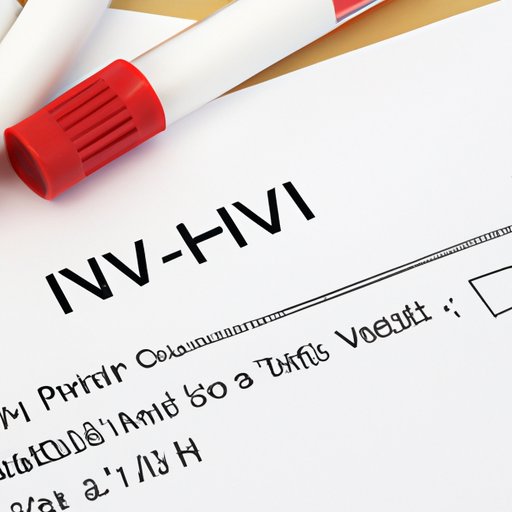
I. Introduction
HIV is a virus that attacks the immune system, making it difficult for the body to fight off infections, diseases, and other illnesses. While there are treatments available to manage the virus and their symptoms, many people still have misconceptions about HIV, particularly when it comes to its symptoms. In this article, we will explore the facts and myths surrounding HIV symptoms, their stages, and what you can do to manage and prevent them.
II. The Truth About HIV Symptoms: What You Need to Know
After contracting HIV, symptoms usually develop within two to four weeks. These symptoms are often referred to as acute HIV infection or primary HIV infection. They can be similar to the flu, such as fever, sore throat, rash, and fatigue.
However, it’s important to note that not everyone with HIV will experience these symptoms. In fact, some people may not have any symptoms at all. This can make it difficult to diagnose the virus.
III. Do All HIV Positive Individuals Show Symptoms? Debunking Common Myths
One of the most common misconceptions about HIV is that everyone who has the virus will show symptoms. This is not true. According to the Centers for Disease Control and Prevention (CDC), around 1 in 8 people with HIV in the United States don’t know they have it because they don’t show any symptoms.
Another myth is that HIV symptoms are always visible and easy to spot. Some people may only experience mild symptoms, or none at all, in the early stages of the virus before it progresses to AIDS.
IV. Understanding the Different Stages of HIV: Symptoms to Look Out For
HIV progresses in three stages: acute infection, clinical latency, and AIDS. Acute infection, as mentioned earlier, is the first stage and is characterized by flu-like symptoms.
Clinical latency, or HIV dormancy, is the second stage. During this stage, the virus continues to multiply in the body, but there are no visible symptoms. This stage can last for several years, and without treatment, HIV can progress to the final stage: AIDS.
Some common symptoms of AIDS are rapid weight loss, recurring fever or night sweats, chronic diarrhea, and unusual spots on the skin or in the mouth.
V. The Importance of Regular HIV Testing, Even Without Symptoms
The only way to know for sure if you have HIV is through testing. It’s recommended that everyone between the ages of 13 and 64 get tested for HIV at least once as part of routine healthcare.
Regular testing is particularly vital for people with a higher risk of contracting the virus, such as those with multiple sexual partners, those who share needles for drug use, and those who have had unprotected sex.
It’s important to remember that HIV can be transmitted even if no symptoms are present. People who are unaware they have HIV can unknowingly transmit the virus to others.
VI. Living with HIV: Managing Symptoms and Improving Quality of Life
Symptoms of HIV can vary, depending on the stage of the virus and the person’s individual immune system. Common symptoms include fatigue, fevers or chills, night sweats, muscle aches, and loss of appetite.
A healthy lifestyle can help manage these symptoms and improve overall quality of life. This includes getting enough rest, eating a balanced and nutrient-rich diet, staying hydrated, and engaging in regular exercise.
VII. Early Detection of HIV: Recognizing Symptoms and Seeking Treatment
The earlier HIV is detected, the better. Treatment for HIV can help manage symptoms, reduce viral load, and prevent transmission. It’s important to know the symptoms of early-stage HIV, such as fever, fatigue, and rash.
Being self-aware of one’s sexual behavior and risk is also essential in seeking out early testing and treatment. It’s important to know that treatment can start even before HIV progresses to AIDS.
VIII. The Link Between HIV Symptoms and Transmission: What You Should Know
HIV is spread through blood, semen, vaginal fluids, rectal fluids, and breast milk. The virus can be transmitted through unprotected sex, sharing needles, and from mother to child during childbirth or breastfeeding.
The risk of transmitting the virus increases when symptoms are present, such as during acute infection and AIDS. It’s crucial to practice preventive measures, such as using condoms during sex, not sharing needles, and not breastfeeding if you have HIV.
IX. Conclusion
Although HIV can be a serious and life-changing diagnosis, it’s important to know that with early detection and proper treatment, it’s possible to manage the virus and live a healthy life with minimal symptoms. Regular testing and preventative measures can also help reduce transmission risk. Let’s seek out the facts about HIV, and encourage one another in our journey towards prevention and awareness.





